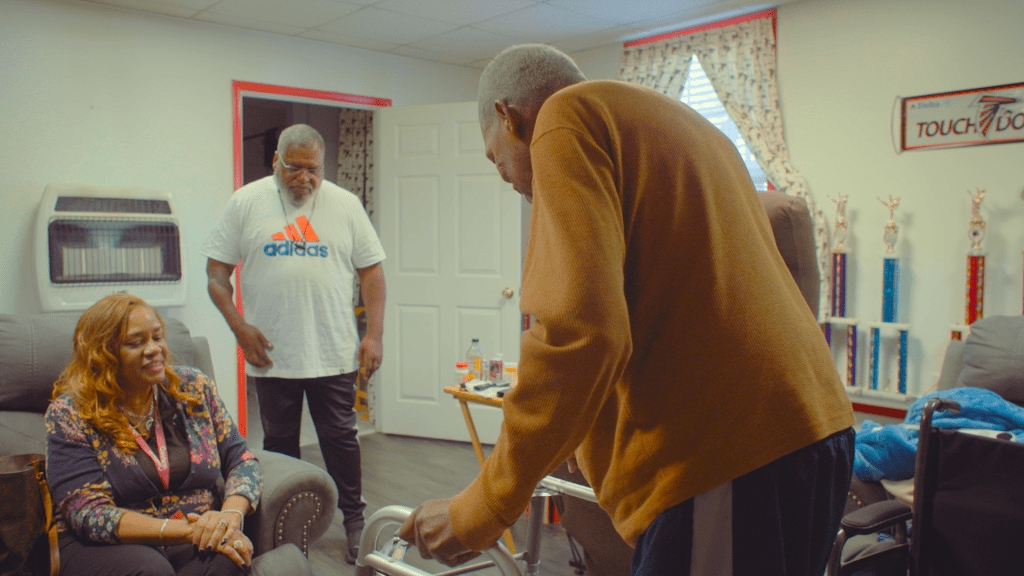
What is the South Dakota Medicaid HOPE Waiver?
Definition of the HOPE Waiver
Previously known as the HCBS Waiver or the Elderly Waiver, the HOPE Waiver supports care for individuals who qualify for nursing home placement, allowing for care to be provided in other settings. The HOPE Waiver aims to provide more affordable care options to reduce costs, but it also benefits seniors who prefer to remain in their own homes or other community-based settings rather than move into a nursing home.
How the HOPE Waiver Works
A Medicaid program, the HOPE Waiver enables eligible individuals to receive care in settings such as their homes, community living homes, assisted living communities, or structured family caregiving homes. The HOPE Waiver aims to reduce costs by reducing the number of people requiring full-time nursing home care. Under the HOPE Waiver, the cost of care provided must be less than 85% of the cost of comparable nursing home care. In 2019, the HOPE Waiver is capped at 1,834 concurrent recipients – meaning the program can support care for up to 1,834 qualified individuals in the 2019 calendar year.
Benefits of the HOPE Waiver
The specific benefits available under the HOPE Waiver vary based on the setting in which the care is provided. Some of the benefits available for qualifying recipients include:
- Personal care
- Assistance with activities of daily living (ADLs)
- Homemaker support
- Adult companion services
- Adult day services
- Respite care
- Meal delivery and/or nutritional supplements
- Home modification assistance
- Emergency response systems
- Specialized medical equipment and supplies
- Support and coordination for community transitions
Eligibility for the HOPE Waiver in South Dakota
In South Dakota, the HOPE Waiver program is available to nursing home-eligible individuals age 65 or older, as well as those between the ages of 18 and 64 who have a disability designation from the Social Security Administration. Other eligibility requirements include:
- The applicant must participate in a needs assessment;
- The applicant cannot be a resident of a hospital, a nursing facility, or an ICF/MR setting;
- The applicant must receive at least one waiver service at least one time per month.
Financial Eligibility Requirements for the HOPE Waiver in South Dakota
There are also financial requirements that must be met for individuals to be eligible for the HOPE Waiver program. In South Dakota, individuals may have an income up to three times the Federal Benefit Rate (FBR) to be eligible (up to $2,313 per month). For married beneficiaries, their income is considered individually; spousal income is not considered. There’s also a Needs Allowance provision, which allows up to $3,160.50 per month of joint income to be allocated to the beneficiary’s spouse. Asset limitations also apply in South Dakota. Single or widowed applicants may have up to $2,000 in countable assets, which typically includes available cash in checking and savings accounts (and other similar accessible resources). For married couples, the asset limitations are a bit more complex:
- If one spouse is living independently and the other spouse is applying for long-term Medicaid, a higher asset limit applies.
- Non-applicants (the beneficiary’s spouse) may have up to $126,420 in countable assets, while the applicant’s assets must meet the $2,000-or-less limitation.
An individual’s or couple’s home does not count towards the asset limitations if the property is valued at $585,000 or less. Vehicles are not considered countable assets for the asset limitation. It’s also worth noting that there’s a 5-year lookback period at asset transfers that have taken place during the five years immediately prior to the individual’s application. That means that an individual who had assets exceeding the asset limitation but transferred those assets to another family member within the past few years may not meet the asset limitation requirement. For applicants who have income and/or assets exceeding the limitations, a Miller Trust or Qualified Income Trust may be an option to consider, funneling income into a trust to pay for care while allowing the applicant to access benefits.
Disadvantages of the HOPE Waiver
The HOPE Waiver is a valuable program for those who qualify, but there are some limitations. In addition to the maximum number of people who can receive care concurrently under the program in a calendar year (currently 1,834 in 2019), the HOPE Waiver does not allow for participant direction of services. That means that beneficiaries cannot choose their own care providers or the specific services they receive. Additionally, it’s not possible for beneficiaries to hire family members as caregivers under the HOPE Waiver program.
How to Apply for the HOPE Waiver in South Dakota
If you meet the eligibility requirements and want to apply for the HOPE Waiver program in South Dakota, the first step is to fill out the Application for a §1915(c) Home and Community-Based Services Waiver, available on the South Dakota Department of Human Services website. You can also contact your local Long Term Services and Supports field office for information and further assistance with applying. For more information on other available programs, eligibility requirements, and other options for obtaining care services in South Dakota, contact the Aging and Disability Resource Center (Dakota at Home) at 1-833-663-9673. For insights on paid family caregiving programs available in your state, visit our How to Become a Paid Caregiver for a Family Member guide.
More insights like this:
-

Understanding Caregiving Disappointment
Read more: Understanding Caregiving DisappointmentBeing a family caregiver brings with it a wide variety of emotions. Next to feelings of fulfillment, there may be equally strong feelings of disappointment—both of which are entirely normal. Understanding these emotional complexities and how to manage disappointment as a caregiver can help you avoid caregiver burnout. Disappointment in caregiving can be…
-

Balancing Back-to-School Routines While Caring for Aging Parents: 5 Practical Tips for the Sandwich Generation
Read more: Balancing Back-to-School Routines While Caring for Aging Parents: 5 Practical Tips for the Sandwich GenerationAs summer comes to a close and back-to-school season ramps up, family caregivers in the Sandwich Generation—those juggling the responsibilities of raising children while also caring for aging parents—find themselves facing a unique set of challenges. It’s a busy time filled with transitions, paperwork, and new routines. The stress and pressure can feel…
